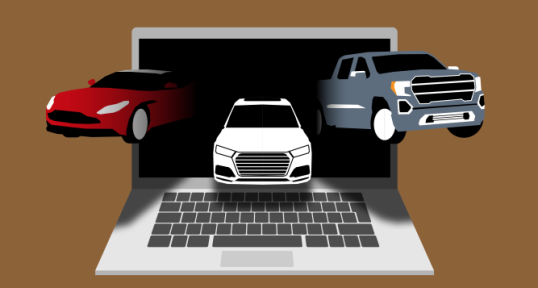The proliferation of electric vehicles is doing the planet a world of good. When electric semi-trucks are added to the mix, everyone can breathe deeper and easier. We’re working hard to repair the damages we and technology have made to the planet in the past.
No one would argue that diesel big rigs add their share of pollution to the air we breathe. Everyone would like to see a quieter, less smelly, less polluting version of the vehicles on the road. Electric big rigs are already being used in California is a step in the right direction.
If we’re going to discuss electrifying the trucking industry by 2030, then we should consider the following:
- Just how badly do diesel combustion engines pollute the atmosphere?
- How can the trucking industry justify the move to electric trucks?
- How will the weight of the battery packs added to the weight in the trailer affect already overburdened roads and bridges?
We can talk all day about sustainability and cutting greenhouse gases, and we will. However, the practical considerations of going electric constitute more than just the price of an electric semi.
Diesel Big Rig Trucks Are Smelly, Yes, But Just How Much Pollution Do They Actually Generate?
The huge trucks backed up to grocery store loading docks, department store warehouses, big box store loading docks, and more are the authors of 28 percent of greenhouse gas discharge, 45 percent of extremely poisonous nitrogen oxide (used in rocket fuel, explosives, and chemicals used every day,) and 57 percent of the tiny particulate pollution we inhale every day.
Add to this the fact that diesel emissions affect the ozone at ground level. This damages crops, trees, and any other vegetation around, not to mention the animals and birds that these things sustain. Emissions also produce acid rain. This touches soil, lakes, and rivers. It’s important because water is needed for producing food, meat, and fish.
The Need For Electric Tractor-Trailer Trucks By The Numbers
Big trucks have been polluting the air since their birth in the early 20th century. The generation of electric power was once the largest contributor to greenhouse gases in America. They switched to cleaner sources of energy, though.
That leaves the transportation industry as the largest contributor of carbon dioxide or CO2 emissions damaging the atmosphere. The transportation industry contributes 27 percent or almost six million metric tons of CO2 emissions yearly. Europe has cut theirs by 32 percent or 1.5 billion tons between 1990 and 2020. The numbers mean that America is the heaviest pollution creator on the planet.
The Advantages Of Switching From Combustion Engines To Electric Semi Trucks
The transportation industry is examining electric heavy-duty trucks upon learning the horrifying nature of the noxious gases produced by diesel fuel along with the numbers described above. The advantages of electric vehicles are undeniable:
- Electric vehicles have no moving parts, no fluids to keep the moving parts from seizing up, and one simple motor on the axle to make the wheels move. That’s it. Nothing produces emissions of any kind.
- Electric vehicles have evolved over the years to include fewer maintenance costs, longer ranges, and shorter charging times. This evolution brings them closer to the price of combustion engine trucks.
- They’re quieter than a feather-dropping.
- A new thing has sprung up: solar farms generating power for electric vehicles. The more of them that are on the road, the more the need for charging stations will increase. Add electric tractor-trailer trucks to the mix, and you have a serious problem. That power has to be generated somehow.
The answer is solar panels. While Tesla is investing in solar farms, fleets and owner-operators might consider installing a thin, flexible solar panel on their trucks. They extend the life of the battery pack as well as maintain a higher-charged battery.
In addition to the vehicle, and power supplies getting an upgrade, new generations of big rigs will come with safety enhancements. In many states, truck accidents have been on the rise over the past few years. Unfortunately, accidents involving semi-trucks tend to have more fatalities due to the sheer size of the vehicles. Additional safety enhancements will hopefully reduce the number of truck accidents across the country.
Has The Already Over-Burdened Infrastructure Being Asked To Handle Electric Big Rigs By 2030 Been Thought Through?
Yes. Statista has the numbers necessary to enact laws improving the roads and bridges that are currently rated poor to mediocre. Those numbers are:
- Two hundred seventy-six million vehicles on the street in 2020.
- New vehicle registrations in 2020 stood at 14 million.
- New pickup truck sales in 2020 topped 11 million.
- 2020 was a bad year for domestic vehicle production; the Big Three only made 2.2 million vehicles, although imports from other countries remain the same.
Put that many cars, buses, pickup trucks, motorcycles, and other conveyances on the road, and you’re going to see severe stress on the road materials. Motorists spend thousands of dollars repairing cars that suffer through potholes and other results of stress.
In other words, more people in more families drive cars to school, college, and work. In the last ten years, that percentage has grown from 15 to more than 17 percent. Seventy-two percent of our goods are transported on roads. All this adds up to 43 percent of our roads’ condition is poor to mediocre.
Drivers on the roads and bridges aren’t the only deterrent to repairing the infrastructure. Weather events weaken the present road materials. Rising temperatures, acid rain, and ice melt chemicals all combine to make more potholes and weak spots on our roads.
California already has big electric rigs deployed and is planning on putting 75 percent of electric rigs on the roads by 2035. By 2045, California is planning on being 100 percent electric. Fifteen states including the District of Columbia are working closely to deploy 30 percent of electric heavy-duty trucks by 2030 and 100 percent by 2050.
President Biden has signed into law directives for 50,000 electric long haul trucks along with electrifying 20 percent of school buses. Fleets also come under the directive, which means postal trucks will be electrified. So the infrastructure question is being thought through.
Follow Techdee for more!





